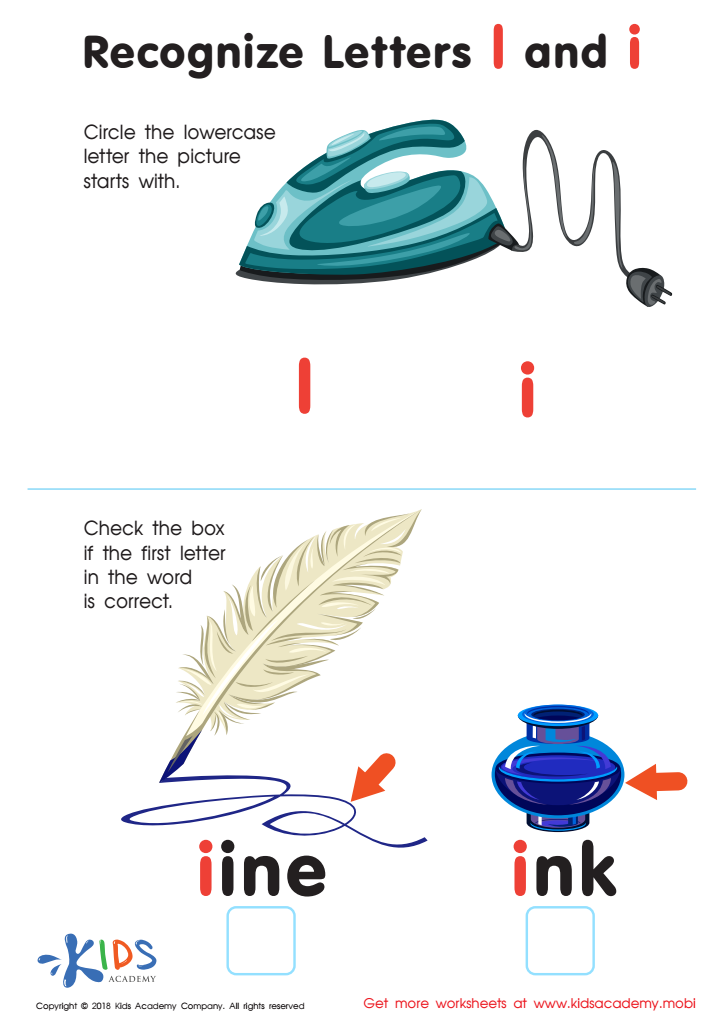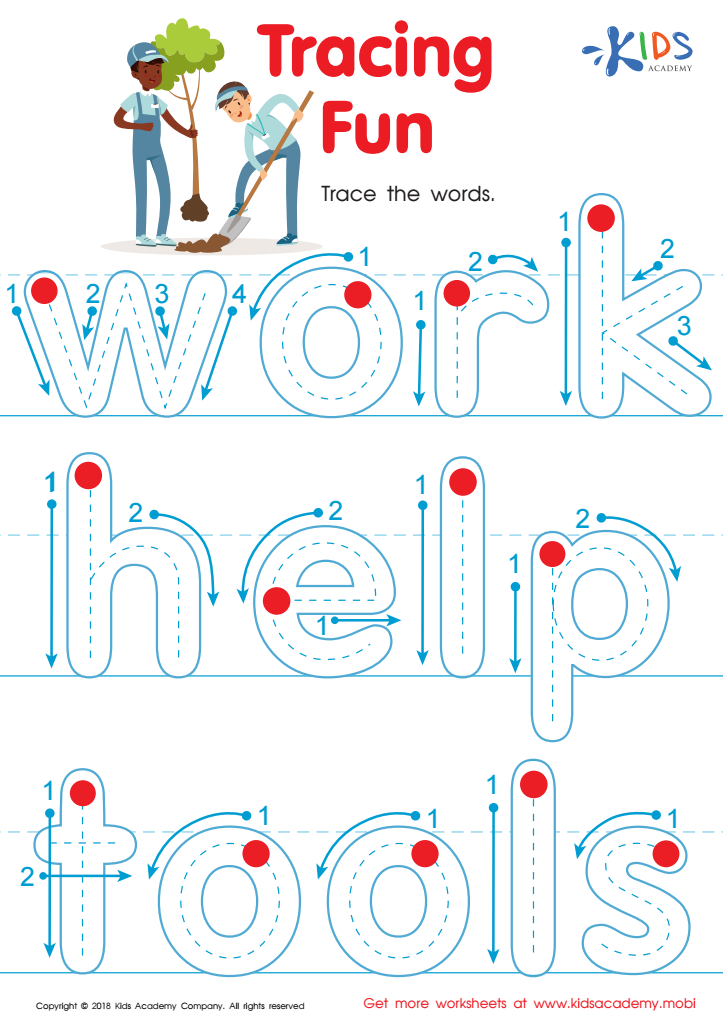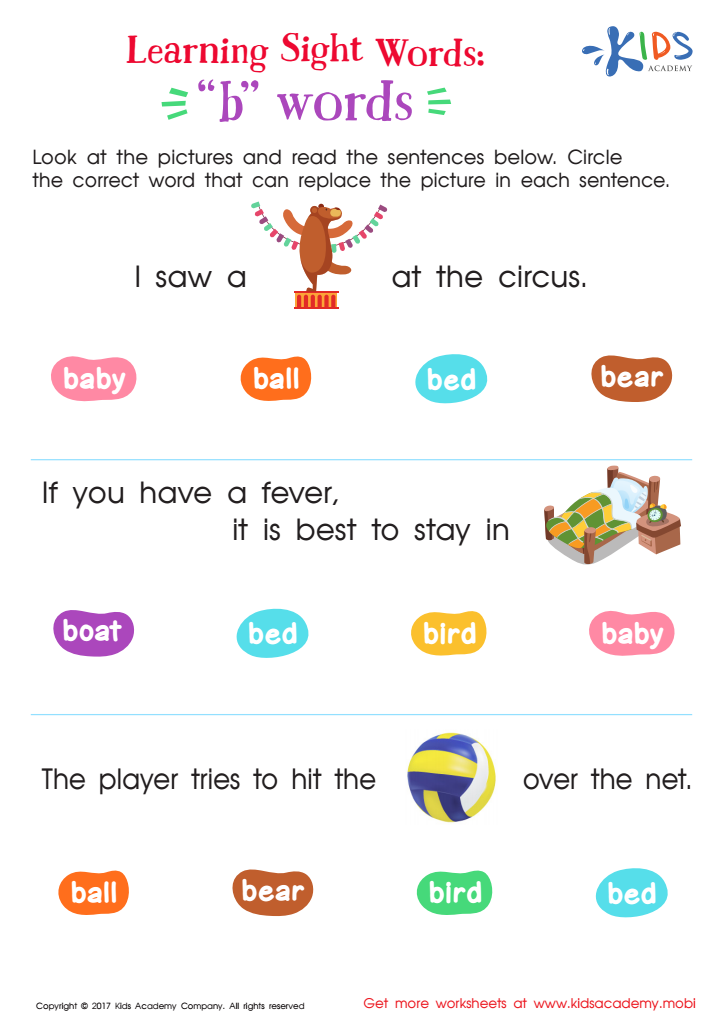Letter recognition Normal Reading Worksheets for Ages 3-8
6 filtered results
-
From - To
Welcome to our "Letter Recognition Normal Reading Worksheets" designed for children aged 3-8! These engaging worksheets provide a fun way for young learners to develop essential literacy skills by recognizing and identifying letters. Each activity is tailored to different learning levels, ensuring all children can participate and progress at their own pace. With vibrant illustrations and interactive exercises, these worksheets not only promote letter recognition but also enhance fine motor skills and boost confidence in reading. Perfect for home practice or classroom use, our resources lay the foundation for lifelong reading success. Start your child's journey to literacy today!


Recognize Letters l and i Worksheet


Long and Short U Worksheet


Tracing Fun Worksheet


Baby, Boat, Bird Worksheet Sight Words Worksheet


Long and Short E Worksheet


"B" Words Printable Sight Words Worksheet
Letter recognition is a fundamental skill that forms the cornerstone of literacy, making it crucial for parents and teachers to prioritize it for children aged 3-8. During these formative years, children develop the cognitive and auditory abilities necessary for reading, making early exposure to letters essential. Mastering letter recognition enhances a child's ability to decode words and comprehend text, which fosters confidence and a lifelong love for reading.
Moreover, letter recognition is directly linked to overall academic success. Research indicates that children who struggle with recognizing letters may face longer-term challenges in spelling, reading fluency, and comprehension. By introducing age-appropriate activities like interactive games, storytelling, and exposure to letter-rich environments, parents and teachers can nurture this vital skill.
Additionally, recognizing letters serves as a gateway to understanding phonics, spelling, and vocabulary. It allows children to make connections between sounds and symbols, laying the groundwork for more complex literacy skills as they progress in their education. Ultimately, by emphasizing letter recognition, parents and teachers not only support children's reading development but also set the stage for their future academic endeavors, promoting success and self-esteem in young learners.
 Assign to My Students
Assign to My Students

















